International Journal of Veterinary Science and Research
Comparison of total Intravenous Ketamine and Propofol Anaesthesia in Acepromazine-Dexmedetomidine sedated cats
Oladapo O Afolabi*, Omowunmi C Oguntoye, Oghenemega D Eyarefe and Adeniran Adetunji
Cite this as
Afolabi OO, Oguntoye OC, Eyarefe OD, Adetunji A (2019) Comparison of total Intravenous Ketamine and Propofol Anaesthesia in Acepromazine-Dexmedetomidine sedated cats. Int J Vet Sci Res 5(1): 007-013. DOI: 10.17352/ijvsr.000034Total intravenous anaesthesia (TIVA) refers to the induction and maintenance of general anaesthesia with drugs administered solely by the intravenous (IV) route. Presently, ketamine and propofol are popular and in use for TIVA in small animals. This study compared ketamine and propofol anaesthesia in cats premedicated with acepromazine-dexmedetomidine combination. Six indigenous Nigerian local cats were premedicated with intramuscular injection of acepromazine (0.2mg/kg) and dexmedetomidine (40µg/kg) mixture, followed by induction of anesthesia with either bolus propofol (1mg/kg) or ketamine (0.5mg/kg) IV 20 min later. Maintenance of anesthesia for 2h was achieved with continous fluid administration using dose of 0.5ml/8ml and 0.05ml/8ml in lactated Ringers solution for propofol and ketamine respectively. One week space was allowed between protocols in the crossover experiment. Anesthetic indices, cardiopulmonary parameters, and rectal temperature were recorded at 5 min intervals for 2 h. Duration of anti-nociception with ketamine protocol was not significantly (p>.05) different from the corresponding propofol protocol value while recovery time and standing time were significantly (p<.05) different between either protocol. Systolic arterial pressure, Diastolic arterial pressure and mean arterial pressure were significantly (p<0.05) lower for propofol protocol than ketamine protocol, while SpO2 responses were significantly (p<0.05) higher for propofol protocol than ketamine protocol. There was no statistically significant difference between other physiological variable means recorded for both protocols. It was concluded that ketamine and propofol protocols produced satisfactory anaesthetic induction and maintenance in healthy cats premedicated with acepromazine-dexmedetomidine. Used in the same manner however, Ketamine produces better anaesthetic quality than propofol.
Introduction
Total intravenous anaesthesia (TIVA) refers to the induction and maintenance of general anaesthesia with drugs administered solely by the intravenous (IV) route using repeated bolus injection (RBI) or constant rate infusion (CRI) technique [1]. Desirable properties of drugs used in the technique include those with short metabolic half-life and rapid clearance from the body thus preventing cumulative effects [2]. The ideal anaesthetic for healthy cats presented for elective procedures should have a rapid onset of action, a wide margin of safety, appropriate duration of action, anti-nociception, rapid and complete withdrawal so that the animals can be discharged immediately after the procedure in a “home–fit” state. Such an anaesthetic does not presently exist and there is a continued search for that agent.
Propofol (2,6,di-isopropylphenol) is an intravenous anaesthetic agent that belongs to the alkyl phenol family [3].It is a short-acting hypnotic agent that has been licenced for use in dogs and cats. It is a non-barbiturate, non-dissociative and non-cumulative intravenous anaesthetic agent [4]. In dogs, it is characterized by smooth and rapid induction of anaesthesia, lack of analgesic effect, dose-dependent cardiopulmonary depression and short recovery times even when anaesthesia is maintained with top-up doses or constant rate infusion [5,6]. It may be used in most species of small mammals at a dose of 10mg/kg after the use of a pre-anaesthetic medication but requires intravenous access. Propofol has little or no analgesic properties. It is therefore necessary to combine propofol with an analgesic agent (opoid or alpha-2- agonist) for painful procedures.
Ketamine is an acyclohexamine derivative that produces dissociative anaesthesia in many species, characterized by a light plane of unconsciousness with the patients eyes open, profound somatic analgesia, intact upper airway reflexes and increased muscle tone [7]. Unlike many anaesthetics, Ketamine usually stimulates cardiovascular function in normal animals, causing increases in heart rate and mean arterial pressure [8]. Following the IV administration of ketamine, induction is rapid and the elimination half-life of the agent is 2.5-3h.
To achieve effective and safe anaesthesia, premedication and usage of appropriate drug combinations is important. Premedication refers to administration of sedative-analgesic drug to a patient before anaesthetic induction. The administration of a tranquiliser (e.g. acepromazine) and an alpha2-adrenoceptor agonist (e.g. dexmedetomidine) produces a state of profound sedation, analgesia and muscle relaxation [9]. When used for preanaesthetic medication, such drug combination also causes a marked reduction in the dose of anaesthetic administered and a more stable cardiovascular dynamics [10].
Materials and Methods
Experimental animals
Approval for this study was obtained from the University of Ibadan Animal Care and Use Research Ethics Committee (UI-ACUREC/App.003/2017/003). Six healthy adult Nigerian indigenous cats of either sex (3 female, 3 male) with mean (±S.E.M) body weight of 1.94 (±0.4) kg were studied. They were housed in indoor cattery of the Department of Veterinary Surgery and Radiology, University of Ibadan with a 12 hour day/night cycle, and fed twice daily on home-made balanced diet.
Fresh water was made available ad libitum. A period of 4 weeks was allowed to get the cats accustomed to their new environment and constant human handling before the study. Food was withheld from the cats for 12 hours before each trial but with free access to water. They were examined and judged to be in general good health based on findings at complete physical examination. All findings were within reference limits prescribed in Mercks Veterinary Manual for cats.
Drugs, equipment, and supplies
The anaesthetic drugs used for this study were propofol (Propofol-lipuro® Fresenius Kabi, Halfway House, South Africa) supplied as 10 mg/ml of white, oil-in-water emulsion in a vial for intravenous injection, ketamine hydrochloride (Vetalar-V®, Pfizer, Germany) supplied as 100 mg/ml in 10ml vial, dexmedetomidine (Precedex®, Pfizer, Germany) supplied as 100mcg/ml solution for IV infusion in 2ml vial , and acepromazine hydrochloride (Acepromazine, Vedco, USA) supplied as 10 mg/ml solution for injection in a 50 mL vial.
The equipment used for this study included; multiparameter veterinary monitor (Cardell 9500 HD Multiparameter monitor, USA), volumetric infusion pump (Hawkmed® HK-1001 Infusion Pump), digital thermometer, drip stand, hydraulic operating table with leather mattress, and haemostatic forceps.
The supplies used were methylated spirit, absorbent cotton wool, Winged needles (23g, Agary pharmaceuticals Ltd., Nigeria), syringes (2 ml., 5 ml., 10 ml.), adhesive tape and infusion fluid (Ringer lactate solution UNIHART, Unique Pharmaceutical Ltd., Nigeria).
Study design
This was a 120 min prospective, randomized, blinded, crossover trial, in which each cat received both anaesthetic protocols with a one-week washout period between trials. The randomization scheme was generated by using the website Randomization.com https://www.randomization.com
Experimental procedure
Prior to the trial, food and water were withheld from the cats for 12 h. Each cat was premedicated with acepromazine (0.002 mg/kg IM) first, followed by dexmedetomidine (0.005 mg/kg IM) after 15 minutes interval.
Venous access was secured using 23-guage winged needles and induction of anaesthesia was achieved with a bolus intravenous (IV) injection of either ketamine (0.5 mg/kg) or propofol (1 mg/kg) by the volumetric infusion pump that was already preset with the values over a period of 30 seconds. Following loss of jaw tone and pharyngeal reflex, cats were left unintubated and allowed to breathe room air spontaneously. Ringer’s Lactate Solution (UNIHART, Unique pharmaceutical) was intravenously administered to all cats at an infusion rate of 2 ml/kg/hr during the anaesthesia period. A multi-parameter veterinary monitor connected to the cats for measurements of physiological variables and a constant rate infusion (CRI) of either 0.6 mg/kg/hr ketamine or 1.2 mg/kg/hr propofol was administered for maintenance of anaesthesia for 120 minutes. Pedal withdrawal reflex was assessed by application of pressure with the use of haemostat closed to one ratchet on the skin between the toes at 5-minutes interval.
Measurements
Following induction of anaesthesia, a multiparameter monitor was attached appropriately to the cat. Heart rate (HR) in beats/min, Systolic arterial pressure (SAP) in mmHg, Diastolic arterial pressure (DAP) in mmHg, mean arterial pressure (MAP) in mmHg, respiratory rate (RR) in breaths/min, haemoglobin oxygen saturation (SpO2)%, and rectal temperature (RT)OC were recorded at 5 min intervals over a period of 120 min of anaesthesia.
The patient monitor (Cardell 9500 HD multiparameter monitor) was utilized to take the aforementioned physiological parameters.
Calculation of anaesthetic indices
The following anaesthetic indices were calculated:
Duration of anti-nociception: time interval (in minutes) between the disappearance and reappearance of the pedal withdrawal reflex, recovery time: time interval (in minutes) between the end of CRI of anaesthetic and the cat’s assumption of sternal recumbency and standing time: time interval (in minutes) between the cat’s assumption of sternal recumbency and its ability to stand.
Statistical analysis
Data were analyzed mean ± Standard error of mean (S.E.M). Anaesthetic indices (The means of the duration of duration of anti-nociception, recovery time and standing time) were compared with control values using students’ T-test for paired data. Two-way ANOVA for repeated measures, followed by Berforioni post hoc test was used to compare the differences within and between groups. A value of p< .05 was considered significant in all cases.
Results
In each of the experimental cat, the intramuscular (IM) administration of acepromazine (0.02 mg/kg) combined with dexmedetomidine (0.005 mg/kg) quite, atypically did not yield the expected degree of sedation with the cats showing varying degree of resistance to handling. Some of the cats vomited, passed varying amounts of urine and faecal materials on administration of dexmedetomidine. However, subsequent to an incremental dose of acepromazine (0.02 mg/ml) profound degree of sedation, characterized by patient recumbency, calmness and lack of resistance to manipulation was observed.
The degree of sedation obtained facilitated the establishment of venous access with an appropriately sized winged needle. Induction of anaesthesia with either propofol (1 mg/kg) or ketamine (0.5 mg/kg) was smooth and rapid (15- 25s) in all cats. At the attainment of jaw relaxation, suppression of pharyngeal reflex and loss of pedal reflex, the cats were left unintubated and allowed to breathe room air spontaneously. Maintenance of anaesthesia was achieved by continuous rate infusion (CRI) with either propofol (0.5mls/8mls Lactated Ringers Solution @ 2mls/kg/hr) or ketamine (0.05mls /8mls Lactated Ringers Solution @ 2mls/kg/hr). The induction and recovery time were uneventful with both protocols.
* ADP - acepromazine-dexmedetomidine-propofol combination
* ADK - acepromazine-dexmedetomidine-ketamine combination
* DA - duration of anti-nociception
* RT - recovery time
* ST - standing time
Anaesthetic indices
Figure 1 shows the anaesthetic indices in cats on ketamine or propofol anaesthesia following premedication with acepromazine-dexmedetomidine. There was no significant alterations (p>.05) in in DA of cats between the two protocols while significant alterations (p<.05) was observed in RT and ST of cats in the two protocols.
Cardiovascular parameters
Mean heart rate (HR), pulse rate (PR), mean systolic (SP), diastolic (DAP) and arterial pressure (AP) responses of the cats anaesthetized with ketamine or propofol anaesthesia following premedication with acepromazine-dexmedetomidine are shown in figures 2-6. There was no significant alteration (p> .05) in the mean heart and pulse rates for both protocols while the mean systolic pressure, diastolic arterial pressure and arterial pressure responses were significantly lower (p<.05) for propofol protocol than ketamine protocol.
Respiratory parameters
Figures 7,8 show the mean RR and SpO2 responses of the anaesthetized cats. There was no significant difference (p>.05) between mean RR responses to both protocols while SpO2 responses were significantly higher (p<.05) for propofol protocol than ketamine protocol.
Rectal temperature values
Mean RT responses of the cats to both anaesthetic protocols are shown in figure 9. There was no significant alteration (p>.05) in the mean rectal temperatures recorded for both groups.
Discussion
The results of this study showed that ketamine and propofol produced satisfactory anaesthetic induction and maintenance in healthy cats pre-medicated with acepromazine-dexmedetomidine and not undergoing any surgical procedure except for mild vomiting, urination and faecal passage due to dexmedetomidine administration. Both drugs produced rapid induction, and minimal blood pressure depression good muscle relaxation. Propofol produced smooth and rapid recovery while ketamine produced poor recovery due to excitation on recovery.
Drugs used in TIVA technique require desirable pharmacokinetic profile which includes; rapid onset of action, short duration of action and high clearance rate from the body so that there are no cumulative effects [11]. Ketamine and propofol were selected as the anaesthetic agents of choice for this study because both drugs possess this pharmacokinetic profile. Also, their use do not require anaesthetic machine. Ketamine is a dissociative anaesthetic agent that is also used for TIVA but poor recovery quality seems to be the most significant disadvantage when using a ketamine –based TIVA [12,13]. Recovery from ketamine anaesthesia is often associated with hyperexcitability, with animals hyper-sensitive to noise, light and handling [14,15].
The use of premedicants is aimed at relieving anxiety in order to produce smooth anaesthetic induction, maintenance and recovery phase if the premedicant has a long duration of action. Its use also reduces the required dose of induction and maintenance agent, thereby reducing their side effects. Premedicants also provide pre-emptive analgesia and this necessitates its use with propofol as it lacks analgesic property [16]. However, in all the cats used in the experiment, the recommended dose of 0.02mg/ml of acepromazine did not sedate the cats deeply enough, all of the cats exhibited fractious behavior and he dose was doubled to 0.04mg/ml before actual sedation took place. This was probably due to the fact the lowest recommended dose was administered as drug combination and synergy with dexmedetomidine, which theoretically should influence dose was considered. The lowest recommended dose apparently did not achieve the depth of desired sedation. It however counteracted the vasoconstrictive effects of dexmedetomidine in order to achieve venous access. Recommended dose of intravenous ketamine for induction in premedicated cats is 2-5 mg/kg and for propofol 0.5-2mg/kg but these drugs can be titrated to effect depending on the patient’s need [17]. Whereas, dose of anaesthetic is normally tailored to patient’s need in clinical practice, fixed doses of ketamine and propofol were used in this study to facilitate comparison of the efficacy and safety of both anaesthetic agents.
TIVA technique involves the delivery of a bolus dose or a fast loading infusion to achieve an adequate blood concentration of the anaesthetic drug at induction, followed by maintenance of anaesthesia through intermittent bolus injection, continuous rate infusion or target controlled infusion [18,14,19]. Continuous rate infusion technique (CRI) requires the administration of anaesthetic by using a volumetric infusion pump or a syringe driver. Target-controlled infusion (TCI) technique involves computer-controlled administration of the anaesthetic by means of infusion pump. CRI technique was adopted in this study.
Fluid therapy is essential during the anaesthetic period for a number of reasons which include: maintaining a patent venous access, maintaining homeostasis of the anaesthetized patient, providing circulatory support in order to maintain oxygen delivery to body organs, replacing fluid losses, replacing insensible fluid losses and replacing ongoing fluid losses. Though, there was no ongoing fluid losses during this experimentsince surgery was not performed, lactated Ringer’s solution was the medium used to deliver the anaesthetic agents intravenously to the cats. This is a standard practice for animals under anaesthesia as a means of providing circulatory support and counteract vasodilation effect of most anaesthetic agents such as propofol and acepromazine used in this study. Lactated Ringer’s solution is a balanced IV fluid routinely used during anaesthesia.
Monitoring the respiratory system in the anaesthetized patient involves an assessment of the ventilator adequacy and gas exchange. The adequacy of oxygen transport and gas exchange was assessed using pulse oximetry which measures the percentage arterial haemoglobin oxygen saturation (SpO2). Adequacy of ventilation is assessed by capnography which measures the carbon dioxide concentration at the end of expiration which is called the end-tidal carbon dioxide (EtCO2). Although, SpO2 was measured in this study, EtCO2, though would have provided additional invaluable data especially since the patients were left unintubated, was not measured due to unavailability of capnograph probe at the time of this study.
Patients’ thermoregulatory capacity is influenced by anaesthesia. Anaesthetic agents depress the central nervous system thereby reducing its sensitivity to changes in body temperature. This was evident in this study as there was progressive and gradual decrease in rectal temperature of cats under both ketamine and propofol protocols from 37oC to 35oC.
The cats recovered in a quiet and warm environment without receiving any type of stimulus until complete recovery was attained and it was smooth for both protocols. Some studies have observed signs of muscular vulnerability with propofol- ketamine anaesthesia in horses [20]. In this present study, some signs of urination and bowel movements (diarrhea) was observed. This may be due to the use of dexmedetomidine premedication. Compared with propofol, ketamine gave better results with longer duration of anti-nociception which suggests it as a better choice for moderately long duration surgical procedure. However, propofol showed shorter recovery and standing periods, which suggests it as a better choice for use in out-patient surgical procedures.
One of the haemodynamic effects of propofol is a decrease in arterial blood pressure with accompanying decrease in systemic vascular resistance [21, 22]. This is evidenced by the drastic drop in heart and pulse rates to well below the normal range of 120-140 beats/minute for both protocols although as stated in literature reviewed the SAP, DAP and AP for propofol protocol was significantly lower than for ketamine protocol. This has profound implications in geriatric animals or cats with cardiovascular function compromise. The haemodynamic effects of ketamine in cats was studied by others who reported that ketamine causes an increase in plasma histamine concentration and a cardiovascular depression [23]. Acepromazine blocks alpha-1-adrenergic receptor thereby causing vasodilation and hypotension [24,25]. The hypotension observed in this study therefore, is most likely induced by the drugs (ketamine, propofol, acepromazine). However, it is not clinically significant because AP value was not below minimum requirement (60-70 mmHg) and systolic arterial pressure was not below minimum requirement (90 mmHg) for glomerular filtration, adequate cerebral and coronary perfusion [14].
The standard fluid rate administration for cats is 4 ml/kg/hr [14] and this was the intravenous fluid rate used for the cats in this study because no surgery was performed. It is therefore suggested that TIVA with ketamine or propofol when used in conjunction with premedication agents (acepromazine 0.02 mg/kg and dexmedetomidine 40 µg/kg) may require increase in intravenous fluid rate in order to avert hypotension.
Respiratory depression in cats after ketamine or propofol induction has been previously described [26]. Ketamine has potential for depressed cardiac function, compromised respiratory function including apnoea and or sudden pulmonary oedema while respiration is rarely affected by acepromazine at therapeutic doses [25].
The clinical significance of pulse oximetry is in its ability to report the blood’s oxygen content in a way that more closely reflects a patient’s oxygenation status than the traditional method of blood gas analysis [27]. The pulse oximeter provides an estimate of the per cent haemoglobin saturated with oxygen (SpO2). SpO2 is an indirect, non-invasive method measurement of SaO2 which is an invasive method requiring arterial blood sample to determine haemoglobin saturation; so monitoring the SpO2 is an excellent alternative that provides early warning of desaturation. SpO2 results (˃90%) obtained in the present study suggests that the available haemoglobin in the blood were adequately saturated with oxygen throughout the period of the measurement. This was supported by the result obtained by the respiratory rate.
There was progressive drop in rectal temperature for both drug protocols (Figure 9). This is expected as ketamine and propofol like other anaesthetic agents, cause hypothermia directly through depression of the thermoregulatory centres in the hypothalamus or indirectly through peripheral vasodilation. The hypothermia observed in the present study was not significant as clinical hypothermia occurs below 35oC. However, placing the cats on warm blanket and newspaper and/or infusion of warm intravenous fluid during the clinical trial might have prevented occurrence of mild hypothermia.
Conclusions
In conclusion, both ketamine and propofol appeared to be equally efficacious and safe for induction and maintenance of anaesthesia in cats premedicated with acepromazine-dexmedetomidine. Both anaesthetic agents produced smooth and rapid inductions without complications and their cardiopulmonary effects were similar except for the significant difference in systolic, arterial and mean arterial pressures. Hypotension was the most prominent adverse effect from both anaesthetic agents suggesting a need to increase circulatory support during prolonged periods of TIVA with either anaesthetic agent. However, it is recommended that both protocols be subjected to further trials in cats undergoing clinical or surgical procedures to assess their efficacy.
- Campbell I, Engbers HA, Kenny GNC (2001) Total Intravenous anasethesia, CPD, Anaesthesia 3: 109-119. Link: https://goo.gl/2jq77b
- Dundee JW, Mcmurray TJS (1984) Clinical aspects of total intravenous anaesthesia: Discussion paper. J R Soc Med 77: 669-672. Link: https://goo.gl/yWheE4
- James R, Glenn JB (1980) Synthesis, biological evaluation and preliminary structure-activity considerations of a series of alkyl phenols as intravenous anaesthetic agents. J Med Chem 23: 1350-1357. Link: https://goo.gl/wXiQXn
- Hall RI, Sandham D, Cardinal P, Tweedale M, Moher D, et al. (2001) Propofol versus midazolam for ICU sedation: A Canadian multicenter randomized trial. Chest 119: 1151-1159. Link: https://goo.gl/FmZHSS
- Adetunji A, Ajadi RA, Adewoye CO, Oyemakinde BO (2002) Total intravenous Anaesthesia with propofol: Repeat bolus versus continouspropofol infusion technique in xylaxine-premedicated Is. J Vet Med 57: 139-144. Link: https://goo.gl/VDH3yR
- Ambros B, Duke-Novakovski J, Pascoe KS (2008) Comparison of the anaesthetic efficacy and cardiopulmonary effects of continuous rate infusion of alfaxalone-2- hydroxypropylbeta-cyclodextrin and propofol in dogs. Am J Vet Res 69: 1391-1398. Link: https://goo.gl/MYzRTL
- Wright M (1982) Pharmacologic effects of ketamine and its use in veterinary medicine. J Am Vet Med Assoc 180: 1462-1471. Link: https://goo.gl/WE5YjB
- Haskins SC, Farver TB, Patz JD (1985) Ketamine in dogs. Am. J. Vet 46: 1855-1860. Link: https://goo.gl/KZf9am
- Clarke KW, Trim CM, Hall LW (2014) Veterinary Anaesthesia.11thEdn. Saunders Elsevier,Edinburgh 140-148. Link: https://goo.gl/PiKQ2n
- Cornick L, Hartsfield SM (1992) Cardiopulmonary and behavioural effects of combinations of acepromazine-butorphanol and acepromazine-oxymorphone in dogs. J Am Vet Med Assoc 200: 1952-1956. Link: https://goo.gl/YjYGPV
- Dundee JW, Mcmurray TJS (1984) Clinical aspects of total intravenous anaesthesia: discussion paper. J R Soc Med 77: 669-672. Link: https://goo.gl/yBJTc9
- Hellebrekers LJ, Sap R (1997) Medetomidine as a premedicant for Ketamine, Propofol or Fentanyl Anaesthesia in dogs. Vet Rec 140: 545-548. Link: https://goo.gl/c1DBS4
- Seliskar A, Nemec A, Roskar T, Butinar J (2007) Total intravenous anaesthesia with propofol or Propofol/Ketamine in spontaneously breathing dogs premedicated with Medetomidine. Vet Rec 160: 85-91. Link: https://goo.gl/y2AYTu
- Kastner SBR (2007) Intravenous anaesthetics. In: Seymour C., Duke-Novakovski T. (editors) BSAVA Manual of canine and feline anaesthesia and analgesia. Second edition. British Small Animal Veterinary Association, Gloucester 133-149.
- Muir WW, Mason DE (1989) Side effects of Etomidate in dogs. J Amer Vet Med Assn 194: 1430-1434. Link: https://goo.gl/8AabrL
- Ferre PJ, Pasloske K, Whittem T (2006) Plasma pharmacokinetics of alfaxolone in dogs after an intravenous bolus of Alfaxan-CD RTU. Vet Anaesth Analg 33: 229-236. Link: https://goo.gl/SKKMkP
- Plumb, DC (1995) Veterinary Drug Handbook, Second Edition. Iowa State University Press, Ames, IA.
- Musk GC, Pang D, Beths T, Flaherty DA (20050 Target-controlled infusion of propofol in dogs – evaluation of four points for induction of anaesthesia. Veterinary Record 157: 766-770. Link: https://goo.gl/76dHsJ
- Van den Nieuwenhuyzen MC, Engbers FH, Vuyk J, Burm AG (2000) Target-controlled infusion systems: role in anaesthesia and analgesia. Clinical Pharmacokinetics 38: 181-190. Link: https://goo.gl/m2oDoP
- Anna E, Gorel N, Birgitta E (2002) The relationship of muscle perfusion and metabolism with cardiovascular variables before and after detomidine injection during propofol-ketamine anaesthesia in horses. Veterinary Anaesthesia and Analgesia 29: 182-199. Link: https://goo.gl/AyASpE
- Lowe D, Hettrick DA, Pagel DS, Warltier DC (1996) Propofol alters left ventricular afterload as evaluated by aortic imput impedance in dogs. Anaesthesiology 84: 368-376. Link: https://goo.gl/H1XqiD
- Langley M, Heel R (1988) Propofol. A review of its pharmacodynamic and pharmacokinetic properties and use as an intravenous anaesthetic". Drugs 35: 334-372. Link: https://goo.gl/WoqNuq
- Ilkiw JE, Pascoe PJ (2003) Cardiovascular effects of propofol alone and in combination with ketamine for total intravenous anaesthesia in cats. Am J Vet Res 64: 913-917. Link: https://goo.gl/ASFUFY
- Farver TB, Haskins SC, Patz JD (1986) Cardiopulmonary effects of acepromazine and of the subsequent administration of ketamine in the dog. Am. J. Vet. Res 47: 631-635. Link: https://goo.gl/19z9S6
- Lemke KA (2007) Anticholinergics and sedatives’ in Practice WJ, Tranquilli JC, Thurman, Grimm KA (eds.), Lamb and Jones’s veterinary anaesthesia and analgesia, 4th edn 203-239.
- Williams BS, Lindsay S, Julie KL, Sheilah AR, Alexis MC, et al. (2011) Use of the anaesthetic combination of Titetamine, Zolazepam, Ketamine and Xylazine for neutering feral cats. JAVMA 220: 1491-1495. Link: https://goo.gl/ips29F
- Muir WW, Hubbell JAE, Skarda RT, Bednarski RM. Handbook of Veterinary Medicine 1995; Second Edition. Mosby-Year Book, Inc.
Article Alerts
Subscribe to our articles alerts and stay tuned.
 This work is licensed under a Creative Commons Attribution 4.0 International License.
This work is licensed under a Creative Commons Attribution 4.0 International License.
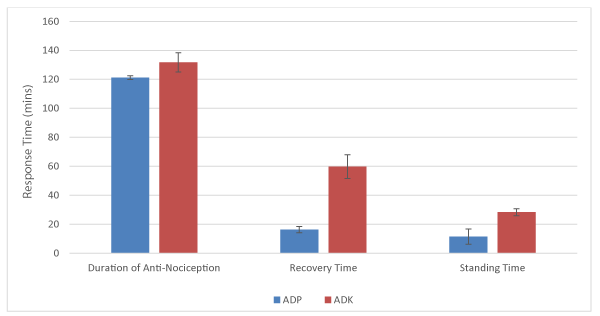
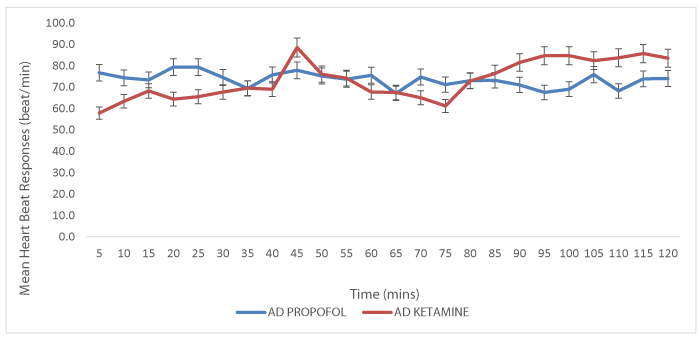


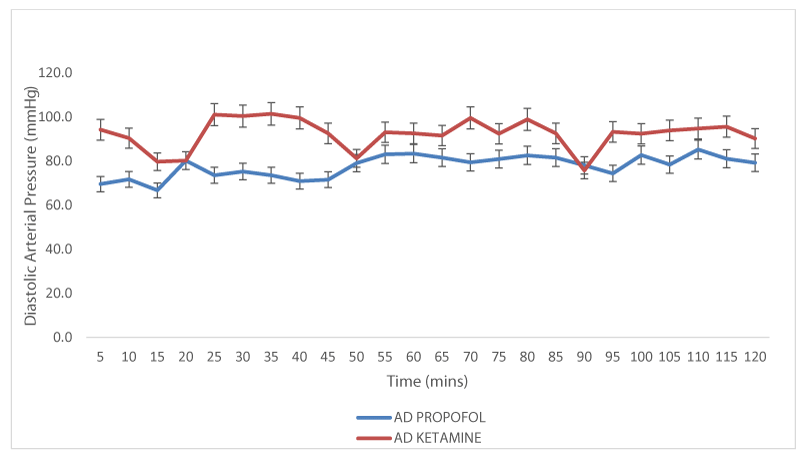

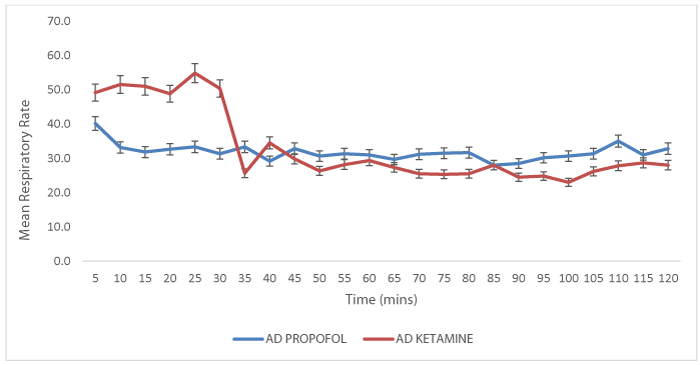
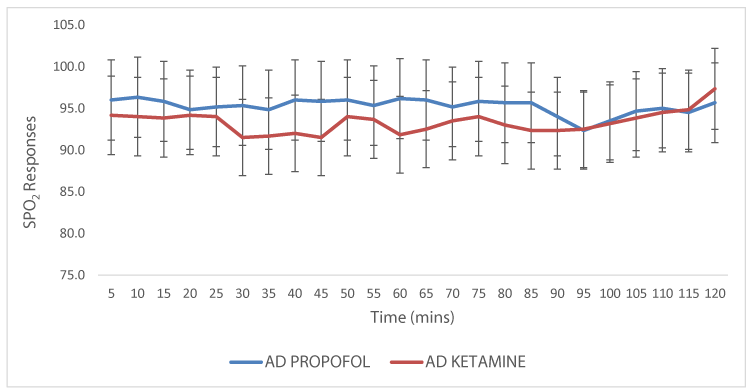
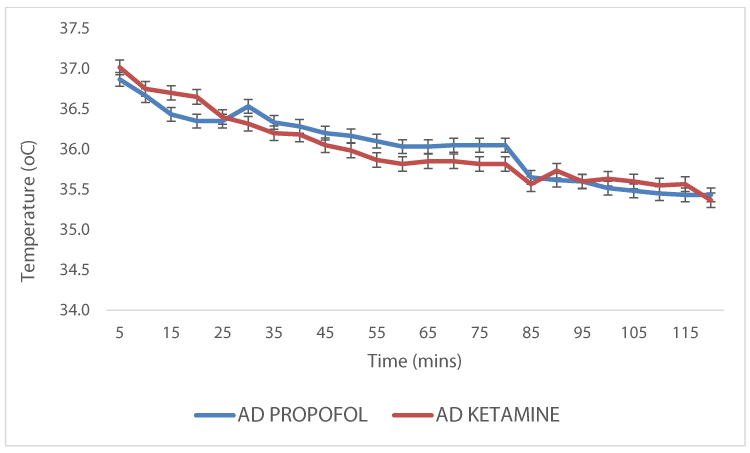

 Save to Mendeley
Save to Mendeley
